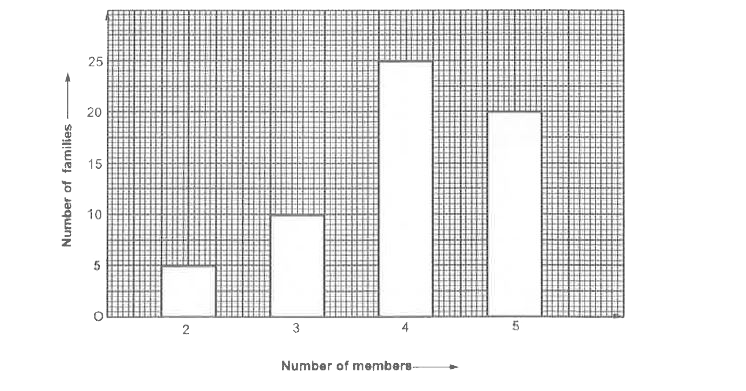In a statistical investigation of 1003 families of Calcutta, it was found that 63 families has neither a radio nor a T.V, 794 families has a radio and 187 has T.V. The number of families in that group having both a radio and a T.V is
36
41
32
None of these
The correct Answer is:B
To solve the problem step by step, we can follow these calculations:
Step 1: Identify the total number of families and those with neither a radio nor a TV.
We know that:
- Total families surveyed = 1003
- Families with neither a radio nor a TV = 63
Step 2: Calculate the number of families with either a radio or a TV.
To find the number of families that have either a radio or a TV, we can use the formula:
n(R∪T)=Total families−Families with neither
Substituting the values:
n(R∪T)=1003−63=940
Step 3: Use the principle of inclusion-exclusion.
We know:
- Families with a radio (n(R)) = 794
- Families with a TV (n(T)) = 187
According to the principle of inclusion-exclusion:
n(R∪T)=n(R)+n(T)−n(R∩T)
Where n(R∩T) is the number of families with both a radio and a TV.
Step 4: Rearranging the formula to find families with both a radio and a TV.
We can rearrange the equation to solve for n(R∩T):
n(R∩T)=n(R)+n(T)−n(R∪T)
Substituting the known values:
n(R∩T)=794+187−940
Step 5: Calculate the number of families with both a radio and a TV.
Now performing the calculation:
n(R∩T)=981−940=41
Conclusion:
The number of families that have both a radio and a TV is 41.
---
We know that:
- Total families surveyed = 1003
- Families with neither a radio nor a TV = 63
To find the number of families that have either a radio or a TV, we can use the formula:
n(R∪T)=Total families−Families with neither
Substituting the values:
n(R∪T)=1003−63=940
We know:
- Families with a radio (n(R)) = 794
- Families with a TV (n(T)) = 187
n(R∪T)=n(R)+n(T)−n(R∩T)
Where n(R∩T) is the number of families with both a radio and a TV.
We can rearrange the equation to solve for n(R∩T):
n(R∩T)=n(R)+n(T)−n(R∪T)
Substituting the known values:
n(R∩T)=794+187−940
Now performing the calculation:
n(R∩T)=981−940=41
The number of families that have both a radio and a TV is 41.
Topper's Solved these Questions
- SETSBOOK - DISHA PUBLICATIONCHAPTER - SETSEXERCISE - EXERCISE-2 : CONCEPT APPLICATOR
30 Videos
- SETSBOOK - DISHA PUBLICATIONCHAPTER - SETSEXERCISE - EXERCISE-2 : CONCEPT APPLICATOR
30 Videos
- SEQUENCES AND SERIES BOOK - DISHA PUBLICATIONCHAPTER - SEQUENCES AND SERIES EXERCISE - Exercise -2 : Concept Applicator
30 Videos
- STRAIGHT LINES AND PAIR OF STRAIGHT LINESBOOK - DISHA PUBLICATIONCHAPTER - STRAIGHT LINES AND PAIR OF STRAIGHT LINESEXERCISE - EXERCISE 2: CONCEPT APPLICATOR
30 Videos
Similar Questions
In a statistical investigation of 1003 families of Calcutta, it was found that 63 families has neither a radio nor a T.V, 794 families has a radio and 187 has T.V. The number of families in the group having both a radio and a T.V is
View SolutionIn a survey of 60 families of a colony, the number of members in each family was recorded and the data has been represented by the bar graph given below :

Read the gar graph carefully and answer the fquestion
What information does the bar graph give ?
How many families have 3 members ?
How many coupies have no child ?
Which type of family is the most common ?
View Solution
Knowledge Check
In a village, each of the 60% of families has a cow, each of the 30% of familles has a buffalo and each of the 15% of families has both a cow and buffalo. In all there are 96 families in the vil lage. How many families do not have a cow or a buffalo?
A20B24C26D28Out of 100 families in the neigh bourhood, 50 have radios. 75 have TVs and 25 have VCRs. Only 10 families have all three and each VCR owner also has a TV. If some families have radio only, how many have only TV? (A)30 (B)35 (C)40 (D)45
A30B35C40D45Out of 100 families in the neigh bourhood, 50 have radios, 75 have TVs and 25 have VCRs. Only 10 families have all three and each VCR owner also has a TV. If some families have radio only, how many have only TV?
A30B35C40D45
In a survey of a town, it was found that 65% of the people surveyed watch the news on T.V., 40% read a newspaper and 25% read a newspaper and watch the news on T.V. What per cent of the people surveyed neither watch the news on T.V. nor read a newspaper?
View SolutionIn a survey of a town, it was found that 65% of the people surveyed watch the news on T.V., 40% read a newspaper and 25% read a newspaper and watch the news on T.V. What per cent of the people surveyed neither watch the news on T.V. nor read a newspaper?
View SolutionWhich of the following statements about classification is not true?
I. Members of a family are less similar than members of an included genus II. An order has more members than the number of members in an included genus Ill. Families have more members than phyla IV. Members of a family share a common ancestor in the more distant past than members of an included genus V. The number of species in a taxon depends on their relative degree of similarity:
View SolutionThe cost of 2 T.V sets and a radio is Rs. 7000, While 2 radios and one T.V set together cost Rs. 4250. The cost of a T.V. set is
View SolutionA family has a man, his wife their 4 sons and their wives. The family of every son also have 3 sons and one daughter each. Find out the total number of male members.
View Solution
